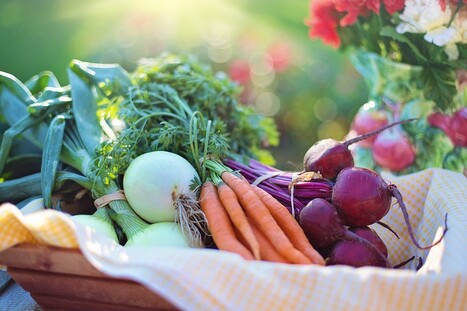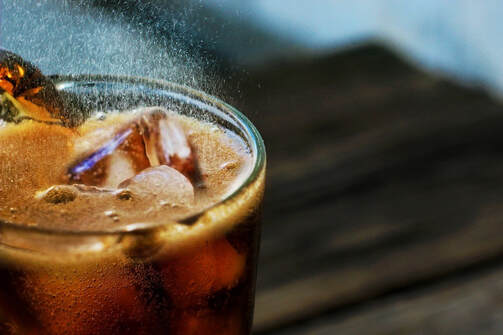Why Read Those Labels!6/7/2020 We have all been there, standing in the grocery store isle looking at the nutrition label of a product we would like to buy. But most of the time we either cannot read what the ingredients are or we simply do not know how what percent of something we should have during a day. For example the American Heart Association recommends that men should not have more than 9 teaspoons or 37.5 grams of sugar per day equaling 150 calories. Whereas woman are recommended not to have more than 6 teaspoons or 25 grams of sugar per day equaling 100 calories. Now here is where it gets tricky, noticing sugar on the nutrition facts list is not always easy due to the fact that sugar can be hidden within may different ingredients. For example corn sweetener, high fructose corn syrup, molasses, sucrose, dextrose and maltose are just some of the favorites food companies like to use within their products. There are many cases where companies will use one or more of these ingredients within a single product, therefore adding to the overall grams of sugar on the nutrition label. When reading a nutrition label it is important to select a product with high values of vitamins, minerals, fiber and poly or monounsaturated fats. These items are all important to your daily and overall health, these are products that our bodies need in order to stay healthy. Now it is also important to stay away from things high in saturated fats, Trans fats, cholesterol, sugars, and sodium as these will have negative effects on your health and most importantly your heart. Another important point is paying close attention to serving sizes. Something such as a bag of candy way list this as 15 pieces, whereas a bag of chips may list this as 1 cup. This is important because it can become easy to eat well over the listed serving size, thus vastly multiplying your daily percentages of certain unhealthy items. Be careful of products labeled natural or organic as this does not always mean that they are a healthier option. It is a common misconception that organic foods are always the better choice, however this simply means that the food product is free of pesticides in such foods as fruits and vegetables and have less likelihood of exposure to antibiotic resistant bacteria in meat. When it comes to things labeled natural it is important to know that this is a broadly used word to describe food in general. Furthermore the term natural has not been defined by the FDA to mean anything in particular, the FDA simply takes this term to mean that the food is free of added color, artificial flavors, and or synthetic additives. When it comes to shopping for food the key is to keep it simple. When it comes to vegetables go for the fresh option as opposed to the can or microwaveable bag choices. Anything in a can will always have a very high level of sodium due to the need to keep the food fresher longer. For example a 1 cup serving of regular canned green beans will contain 376 milligrams of sodium! This is 16 percent of what is recommended for a person’s daily value. When looking at frozen vegetables companies will add preservatives or other additives during the packaging phase, which include sodium. Sodium bicarbonate is a very popular choice for companies to use because it will help the frozen vegetables to keep their bright color. Also Sodium chloride which is another name for table salt is also added so that the vegetables will keep their freshness while frozen. Therefore it is clear simply go for the fresh option, this way while cooking you can add healthy choices for flavor such as, garlic powder, sea salt (healthier alternative), pepper, cayenne pepper, or any choice of spices. When reading food labels it may become overwhelming therefore the best choice is simply choice a food product with less listed under the ingredients tab, think of the old phrase less is more! However it is important to note there are ingredients you do want to stay away from as much as possible. BHA is found in foods that contain oils and has been shown to cause cancer in rodents as well as listed as a carcinogen. Some foods this is found in are fruity pebbles and cocoa pebbles. Parabens are a synthetic preservatives designed to prevent mold or yeast in foods, however this has been shown to decrease sperm and testosterone in rodents and has been found in breast cancer tissues in human woman. Parabens can been found in all Baskin-Robbins sundaes. Partially Hydrogenated oil is known as an artery blocking trans-fat added to foods so that the company can label their food as have 0 grams of trans fat. This can be found in Celeste frozen pizzas. Sodium Nitrite is used in meat produces to prevent botulism and helps to keep that fresh pink color in meat. However after eaten sodium nitrite will fuse with amino acids within the body and forms nitrosamines, which are a powerful and dangerous carcinogenic compounds. Oscar Mayer hot dogs and Hormel bacon are high in Sodium Nitrite. Caramel coloring is used by the soda industry in a BIG way, this food coloring along with the fact that soda makers treat their sugar with ammonia produce harmful carcinogens. A report published by the Center for Science in the Public Interest found that high levels of caramel color found in soda account for approximately 15,000 cancer in the United States annually. This can be found in most soft drink and sodas. As you can see it is so important to read and understand the labels on your food products, not only to stay within the recommended guidelines when it comes to consumption but also to know and understand when is actually in your food. Therefore when in doubt eat fresh fruits and vegetables and foods with short and clear to understand ingredients. Pair this with exercise and healthy food choices and you are on your way to leading a long and happy life.
Frankie Results
Certified Fitness / Nutrition Coach Archives
June 2020
Categories |




 RSS Feed
RSS Feed